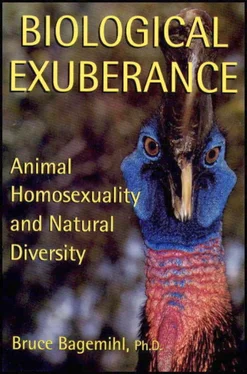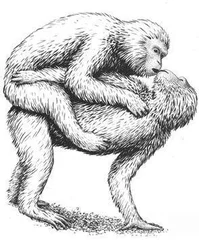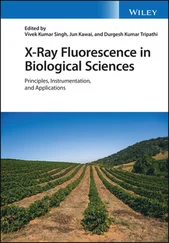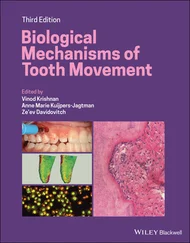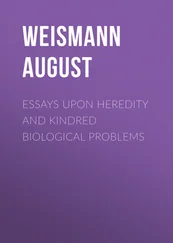Other Species
Intersexuality or transgender has also been reported among Fin Whales ( Balaenoptera physalus ): one individual, for example, had both male and female reproductive organs, including a uterus, vagina, elongated clitoris, and testes.
Sources
*asterisked references discuss homosexuality/transgender
*Bannister, J. L. (1963) “An Intersexual Fin Whale Balaenoptera physalus (L.) from South Georgia.” Proceedings of the Zoological Society of London 141:811–22.
Clark, C. W. (1983) “Acoustic Communication and Behavior of the Southern Right Whale (Eubalaena australis ) .” In R. S. Payne, ed., Communication and Behavior of Whales, pp. 163–98. American Association for the Advancement of Science Selected Symposium 76. Boulder: Westview Press.
Everitt, R. D., and B. D. Krogman (1979) “Sexual Behavior of Bowhead Whales Observed Off the North Coast of Alaska.” Arctic 32:277–80.
Finley, K. J. (1990) “Isabella Bay, Baffin Island, an Important Historical and Present-Day Concentration Area for the Endangered Bowhead Whale (Balaena mysticetus) of the Eastern Canadian Arctic.” Arctic 43:137–52.
*Koski, W. R., R. A. Davis, G.W. Miller, and D. E. Withrow (1993) “Reproduction.” In J. J. Burns, J. J. Montague, and C. J. Cowles, eds., The Bowhead Whale, pp. 239–74. Lawrence, Kans.: Society for Marine Mammalogy.
*Moore, S. E., and R. R. Reeves (1993) “Distribution and Movement.” In J. J. Burns, J. J. Montague, and C. J. Cowles, eds., The Bowhead Whale, pp. 313–86. Lawrence, Kans.: Society for Marine Mammalogy.
*Östman, J. (1991) “Changes in Aggressive and Sexual Behavior Between Two Male Bottlenose Dolphins (Tursiops truncatus) in a Captive Colony.” In K. Pryor and K. S. Norris, eds., Dolphin Societies: Discoveries and Puzzles, pp. 304—17. Berkeley: University of California Press.
Payne, R. (1995) Among Whales. New York: Scribner.
*Richardson, W. J., and K. J. Finley (1989) Comparison of Behavior of Bowhead Whales of the Davis Strait and Bering/Beaufort Stocks. Report from LGL Ltd., King City, Ontario, for U.S. Minerals Management Service, Herndon, Va.; OCS Study MMS 88–0056, NTIS no. PB89–195556/AS. Springfield, Va.: National Technical Information Service.
*Richardson, W. J., K. J. Finley, G.W. Miller, R. A. Davis, and W. R. Koski (1995) “Feeding, Social, and Migration Behavior of Bowhead Whales, Balaena mysticetus, in Baffin Bay vs. the Beaufort Sea—Regions with Different Amounts of Human Activity.” Marine Mammal Science 11:1–45.
Saayman, G. S., and C. K. Tayler (1973) “Some Behavior Patterns of the Southern Right Whale, Eubalaena australis.” Zeitschrift für Säugetierkunde 38:172–83.
*Tarpley, R. J., G. H. Jarrell, J. C. George, J. Cubbage, and G. G. Stott (1995) “Male Pseudohermaphroditism in the Bowhead Whale, Balaena mysticetus.” Journal of Mammalogy 76:1267–75.
*Würsig, B., and C. Clark (1993) “Behavior.” In J. J. Burns, J. J. Montague, and C. J. Cowles, eds., The Bowhead Whale, pp. 157-99. Lawrence, Kans.: Society for Marine Mammalogy.
*Würsig, B., J. Guerrero, and G. Silber (1993) “Social and Sexual Behavior of Bowhead Whales in Fall in the Western Arctic: A Re-examination of Seasonal Trends.” Marine Mammal Science 9:103–11.
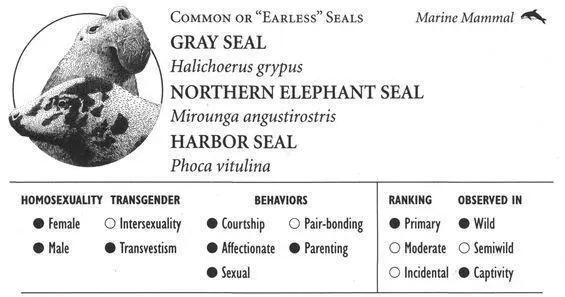
GRAY SEAL
IDENTIFICATION: A large seal (up to 7 feet in males) with an elongated muzzle and a spotted coat. DISTRIBUTION: North Atlantic waters, including northeastern North America (especially Newfoundland), Iceland, British Isles, Norway, Kola Peninsula, Baltic Sea. HABITAT: Temperate and subarctic waters; breeds and molts on rocky coasts and islands. STUDY AREA: Ramsay Island, England.
NORTHERN ELEPHANT SEAL
IDENTIFICATION: One of the largest seals, reaching a length of up to 16 feet and a weight of 5,500 pounds (in males); adult males have a prominent proboscis. DISTRIBUTION: North Pacific waters from Alaska to Baja California. HABITAT: Oceangoing; breeds and molts on islands and coasts. STUDY AREA: Ano Nuevo State Reserve, California.
HARBOR SEAL
IDENTIFICATION: A smaller, round-headed seal with grayish brown, usually spotted fur. DISTRIBUTION: Waters of the North Atlantic and North Pacific. HABITAT: Coastal reefs, sandbars, rocks. STUDY AREAS: Otter Island, Pribilof Islands, Alaska; Nanvak Bay, Cape Newenham National Wildlife Refuge, Alaska; Seaside Aquarium, Oregon; subspecies P.v. richardsi, the Pacific Harbor Seal.
Social Organization
Gray Seals are highly gregarious, congregating in large colonies for mating and molting, and in large groups to feed. In some populations the mating system is primarily polygynous, meaning that males mate with multiple partners, do not form heterosexual pair-bonds, and do not participate in parenting. However, some individuals in these areas are “monogamous” in that they mate with the same partner year after year, while in other populations the majority of individuals mate with only one partner but not necessarily the same one each year. Northern Elephant Seals are more solitary when at sea, although they form large breeding and molting aggregations in traditional areas known as ROOKERIES and also have a polygynous mating system. Harbor Seals generally congregate in mixed-sex groups on land, anywhere from a dozen to several thousand animals; they often mate in the water, however, and appear to have a polygynous mating system as well.
Description
Behavioral Expression: During the nonbreeding season, both Gray Seal and Northern Elephant Seal bulls engage in homosexual activity. Gray Seals come ashore to molt their fur, gathering in groups of up to 150 animals, no more than half a dozen of which are females. Those males who have completed their molt often roll around in pairs near the water and mount each other; bulls of all ages participate in this activity. Both adolescent and younger adult Northern Elephant Seal bulls also engage in homosexual mounting during the molt period. This occurs in shallow waters near the shore, often as a part of extended bouts of harmless play-fighting among clusters of males. Prior to and during the mating season, this activity continues among adolescent males, though it is usually no longer aquatic. Adolescent males often spend time in male-only areas that are separate from the breeding grounds. Males are attracted to the play-fighting and mounting activity in these areas and may travel up to 100 yards through the rookery to join in. Adult bulls do not participate in this activity. However, they do sometimes mount younger adolescent and juvenile males (two to four years old). Typically the older male approaches a younger male at rest, moving up alongside him and sometimes placing his front flipper over his back in the position characteristic of heterosexual copulations. Usually the younger male struggles to escape, and the mounter may try to subdue him by pressing or bouncing his neck down on top of him or biting his neck. The older male may have an erection and attempt to penetrate the younger male, but he rarely if ever succeeds. Although they prefer juveniles or adolescents, a few bulls also try to copulate with much younger animals, such as weaned pups of both sexes (who strongly resist their advances).
Читать дальше
